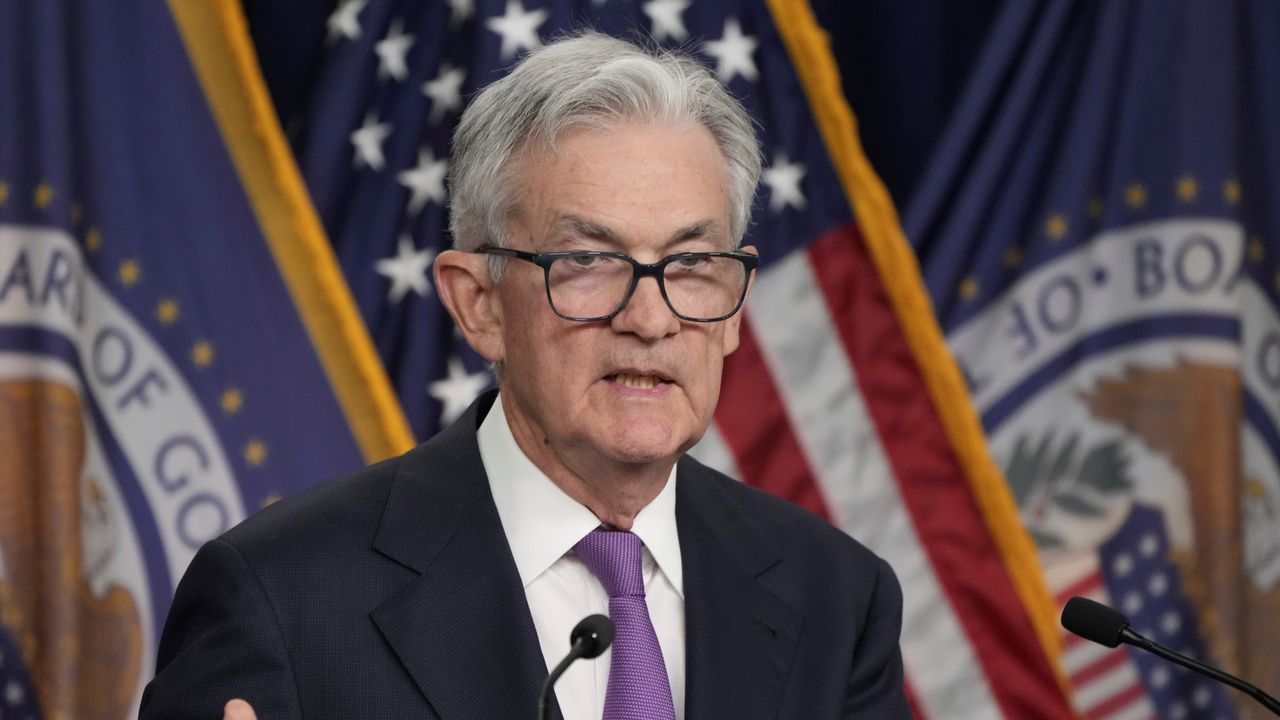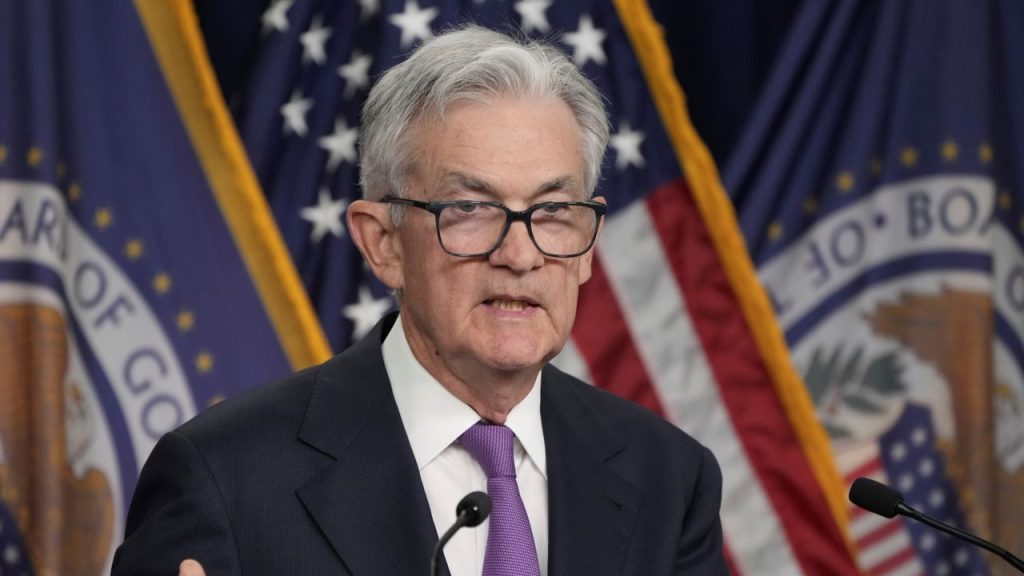
US financial system a “minefield of vulnerabilities”
By Nick Beams.
Those pondering why the US Federal Reserve made a sudden and dramatic turn away from its previous insistence that monetary policy would need to remain restrictive, will find some of the answers in the latest annual report of the Financial Stability Oversight Council (FSOC).
In its report, issued the day after Wednesday’s Fed decision, the FSOC detailed a growing number of “vulnerabilities” that have emerged as a result of higher interest rates any one of which, or in combination, could set off a financial crisis.

The FSOC, set up under the Dodd-Frank legislation in the wake of the global financial crisis of 2008, is chaired by US treasury secretary Janet Yellen and includes Fed chair Jerome Powell and Securities and Exchange Commission chief Gary Gensler.
The report began by reviewing the March banking crisis which, starting with the collapse of Silicon Valley Bank, saw three of the four largest bank failures in US history.
While laying the blame for the crisis on “poor risk management practices”—without explaining and how why those practices were allowed to persist by regulatory authorities—it said the events of the spring “underscored that activities of non-global systemically important banks can pose a risk to financial stability.”
It also highlighted the speed with which the crisis developed, the result of new technologies in the banking system and in social media.
“Bank runs are not new,” it said, “but the speed with which deposits flowed out of some banks in early March was unprecedented.”
Despite these events, the report said the financial system had remained “resilient” this year amid the “notable increase in interest rates.”
“However,” it continued, “additional increases in market interest rates would further increase debt servicing costs for those borrowers with variable-rate debt or who need to refinance existing debt, as well as reduce the value of existing fixed-income instruments.”
In combination with moves by banks to tighten credit as well as uncertainty over the economic outlook, this could lead to “potential financial stability risks if they result in financial distress among financial institutions and investors that spills over into other financial institutions and the broader system.”
The same risk arose from the increasing involvement of non-bank financial institutions in the system.
For the first time, the Council pointed to the risks arising from the increased use of artificial intelligence (AI) within the financial system, identifying its use as “an emerging vulnerability.”
Of course, the report did not refer to it, but this characterisation of AI is a confirmation of one of the central foundations of Marxist political economy, namely, that the crisis of capitalism is rooted in the fundamental contradiction between the growth of the productive forces and the social relations based on private ownership and profit.
With its very introduction, AI, which could provide enormous economic advances, has the potential to set off a crisis.
Climate change, which the ruling classes have let rip because action against it impinges on the bottom line, also has major financial implications in the areas of insurance and real estate, in particular the availability of property and casualty insurance (P&C).
The FSOC said many insurance companies had either lifted their premiums or had withdrawn completely, “most notably in high-risk geographic markets such as California, Florida and Louisiana” and these changes in the P&C market could affect mortgage markets and house prices and “potentially generate larger economic spillover effects.”
In its outline of financial risks, the report devoted considerable attention to the commercial real estate (CRE) market. It has been hit from two sides—the rise in interest rates and lowered demand for office space as a result of changing work practices. The latter is due to increased working from home as a result of the pandemic.
“Elevated interest rates, high costs, weakness in central business district CRE conditions and potential structural changes in demand for office space have heightened concerns about CRE. Maturing loans [which have to be refinanced at higher rates] and expiring leases amid weak demand for office space have the potential to strain office sector conditions further, which could cause stress to spread beyond this sector.”
Higher interest rates have also increased non-financial corporate credit risk.
“If credit quality significantly worsens, a potential wave of debt defaults could lead to large redemptions at investment funds with significant liquidity mismatches and in turn disrupt bond marketing functioning. Moreover, such defaults may have a cascading effect across broader financial markets.”
However, the FSOC did not have any recommendations to prevent such a potential disaster. It merely stated that authorities continue to “monitor levels of nonfinancial business leverage, trends in asset valuations, and the implications of the potential for a sustained period of higher interest rates for the entities they regulate in order to assess and reinforce the ability of the financial sector to manage severe simultaneous losses.”
While it is not significant relative to the size of the financial system as a whole, distress in the crypto market also had “the potential to transmit to traditional financial firms.”
The report warned that the banking sector faced a “challenging environment,” which included “higher interest rates and concerns about the economic outlook and credit quality.”
It said there were key lessons to be learned from the turmoil in the spring that could contribute to reducing financial stability risks emanating from this sector.
But it did not say what those lessons were, other than to call on supervisors to ensure that banks maintained adequate capital and liquidity and had sound interest rate risk management practices.
The chief conclusion, however, to be drawn from the March crisis was that the regulatory system was virtually non-existent. In some cases, where problems were identified no action was taken and the upshot was that the Fed and other financial authorities had to intervene to guarantee all uninsured depositors lest the entire system collapsed.
The report gave relatively short shrift to problems in the $25 trillion US Treasury market, saying it had shown resilience in 2023. This was rather surprising given recent history, including the market freeze in the March 2020 “dash for cash,” and the current efforts by SEC chief Gary Gensler to establish a central clearing house that would manage an additional $1 trillion worth of trades in an effort to ensure greater stability.
Overall, the picture presented by the FSOC report is that the financial system is a kind of minefield in which the triggering of any one of numerous “vulnerabilities,” created by the transition from a regime of virtually free money to higher rates, could set off a crisis across the system. This was no doubt a key factor behind the Fed turn at its meeting last week.
[This article was originally published by the WSWS here on December 18, 2023]

